-
随着人口聚集以及城市化的推进,城市区域不透水地面面积越来越大,由此导致城市内涝频发并产生径流污染问题[1]。特别是雨水径流中存在大量的N、P等营养物质,当这些N、P污染物随雨水径流进入自然水体后,会造成水体富营养化[2]。为了解决城市内涝以及径流污染,各种基于源头控制的低影响开发措施逐渐受到人们的关注。
生物滞留池作为一种雨水径流源头控制的低影响开发措施,能有效缓解城市雨水径流对水文、水质及水生态带来的冲击[3]。其对于一些重金属、悬浮物等的去除效果良好,但对N、P等营养物的去除效果波动较大[4-5]。雨水径流中的P主要以磷酸盐形式(H3PO4,pH<2.16;
H2PO−4 ,pH<7.20;HPO2−4 ,pH<12.35)存在[6]。有研究[7]表明,填料性能特别是填料的化学吸附特性是决定生物滞留池除磷效果的最主要因素。为此,有研究[2, 8]通过改良填料以提高P的去除效果,通过在生物滞留池中添加5%的水处理残渣或10%硫酸铝处理过的蒙脱石提高对P的去除效果。RICHARDSON等[9]指出,生物滞留池中磷的去除主要依靠填料中铁氧化物的吸收,并且填料中铁的含量对填料吸附磷的效果具有一定影响。有研究[10-12]发现,抬高生物滞留池出水口高度形成一定淹没滞水区可创造一定厌氧条件,同时在淹没滞水区添加木屑、生物炭等碳源作为电子供体,可促进反硝化过程,从而提高对总N的去除率,但这种改进方法对于生物滞留池P的去除效果会产生一定的负面影响。LI等[13]和ZHANG等[14]通过表面活化等方法将铁、镁附着于生物炭表面,能制备对P吸附性能优越的生物炭,这种新型生物炭目前主要用于土壤改良,尚未用于生物滞留池填料的改良。通过在淹没区投加一定量铁改性生物炭,既可以作为电子供体,也可以提高填料对P的吸附效果,避免因生物滞留池淹没区的设置造成对P的去除影响。本研究提出了铁改性生物炭和普通生物炭改良生物滞留池填料的方法,通过分析不同填料生物滞留实验柱在不同淹没区高度和不同落干期条件下对
PO3−4 -P的去除效果及不同高度的填料对PO3−4 -P的截流量,探讨了铁改性生物炭以及普通生物炭对于生物滞留池填料的改良作用;在此基础上,开展了生物滞留池对典型地区雨水径流中PO3−4 -P的去除效果研究,力求通过对生物滞留池填料的优化来提高生物滞留池雨水净化功能。
全文HTML
-
1)生物滞留池填料。本研究中,生物滞留池所用填料主要包含C33混凝土砂、土、普通生物炭(SWT)和铁改性生物炭(GXT)。各种填料理化性质如表1所示。
2)主要试剂。六水合三氯化铁(FeCl3·6H2O,99.99%)、磷酸二氢钾(KH2PO4,99.50%)、氯化铵(NH4Cl,99.50%)、硝酸钾(KNO3,99.99%)、无水氯化钙(CaCl2,96.00%)、无水乙醇(CH2CH3OH,99.70%)、浓硫酸(H2SO4,95%~98%)、浓盐酸(HCl,36%~38%)。
3)主要仪器。水质浊度仪(2100Q,美国哈希水质检测有限公司)、水质色度仪(SD9001,上海昕瑞仪器仪表有限公司)、紫外-可见光分光光度计(TU-1900,北京普析通用仪器有限责任公司)、离心机(TGL-16M,贝克曼库尔特有限公司)、超声清洗仪器(KQ-500DE,杭州法兰特超声波有限公司)、马弗炉(SXL1008,中国科学院上海光学精密机械研究所)。
-
实验采用直径为300 mm,高1 250 mm的HDPE圆柱箱体。实验柱编号及填料层填料类型见图1。箱体内部结构自上而下为超高层(45 mm)、淹没层(255 mm)、覆盖层(100 mm)、填料层(700 mm)、砾石排水层(150 mm)。沿实验柱外壁设有不同高度填料取样口,柱底设有上翻的出水口控制淹没区高度。为了减少外界环境温度的影响,实验柱外壁使用保温膜包裹,同时为避免植物干扰,实验柱中不种植物。
覆盖层使用粒径为10~20 mm的碎石,砾石排水层使用粒径为30~40 mm的砾石。参考北卡罗纳州雨洪最佳管理手册[15],对照组填料T1采用88%混凝土砂、12%土的质量百分比均匀混合而成,pH为8.03±0.03;改良填料T2为填料T1均匀混合4% SWT,pH为7.33±0.09;改良填料T3为填料T1均匀混合4% GXT,pH为6.94±0.04。
-
1)生物炭制备及改性方法。SWT原料为稻壳,采用热裂解法制备,热解升温速率为15 ℃·min,最高热解温度为500 ℃。使用FeCl3溶液对SWT进行改性[13],取100 g SWT浸泡于1 L浓度为1.0 mol·L−1的盐酸溶液中1 h,然后淋洗,直至淋洗液为中性;于75 ℃烘干12 h后,按照铁炭的质量比为0.70,将上述生物炭放置于FeCl3溶液中,混合均匀并静置1 h,再用去离子水淋洗至中性,最后于75 ℃烘干,铁改性生物炭被标记为GXT。
2)生物炭淋洗实验。采取淋洗实验评价不同生物炭在去离子水(DI)或人工模拟降雨径流(SW)连续淋洗条件下营养物的释放特征。称取1 g干燥的SWT或GXT分别加入有40 mL DI或SW离心瓶中,在150 r·min−1频率下振荡24 h后以500 r·min−1高速离心20 min,取上清液经0.45 μm孔径滤纸过滤,重复10次后分析
PO3−4 -P含量,设置只装有DI或SW无生物炭的离心瓶作为对照组,做2组重复实验。SW使用pH为7.0±0.20且含有8 mg·L−1NH+4 -N、8 mg·L−1NO−3 -N和120 mg·L−1 CaCl2的溶液[16]。3)生物炭对磷的等温吸附实验。实际应用中,生物滞留池的填料将被入渗的雨水径流不断淋洗,会导致可溶物浸出。为检验淋洗后的生物炭对
PO3−4 -P的实际吸附能力,本研究使用在淋洗实验中经DI淋洗10 d后的SWT和GXT作为实验材料。PO3−4 -P等温吸附实验在室温条件下进行,每种生物炭做2组重复实验[16]。0.1 g的SWT(或GXT)加入50 mL不同浓度PO3−4 -P溶液中(0、10、20、30、40、50、60、70、80和100 mg·L−1),在室温下于150 r·min−1振荡24 h,吸附液通过0.45 μm滤头过滤后测定其中的PO3−4 -P浓度。吸附平衡浓度采用式(1)计算。式中:qe为吸附平衡时的吸附量,mg·g−1;C0为初始溶液浓度,mg·L−1;Ce为吸附平衡溶液浓度,mg·L−1;V是溶液体积,L;m是吸附剂质量,g。选择Langmuir模型对实验数据进行非线性回归拟合,结果见式(2)。
式中:qmax为Langmuir模型最大吸附量,mg·kg−1;KL为Langmuir模型亲和性参数,L·mg−1。用系数RL来判断是否容易发生吸附,计算方法如式(3)所示。
当0<RL<1时,容易发生吸附;当RL>1时,不易发生吸附;当RL=0时,为可逆吸附;当RL=1时,为线性吸附。
4)径流模拟实验。为研究不同淹没高度生物滞留池对于雨水径流中P去除效果,分别设置实验柱出口高度为0、300和600 mm,每一实验条件运行前实验柱预先运行3 d。不同淹没高度实验中的水力条件和污染物浓度一致,雨水径流根据《海绵城市建设技术指南》[1],按照西安市年径流总量控制率为85%的降雨量,生物滞留池和汇水区面积比为5%,径流系数0.8,实验开始连续进水6 h,进水流量56.69 mL·min−1。为避免其他条件干扰,配水使用人工配水,模拟自然降雨,污染物浓度参考西安市道路、屋顶雨水径流污染物浓度平均值确定[17-18],具体污染物及浓度如下:
NH+4 -N 8 mg·L−1,NO−3 -N 8 mg·L−1,PO3−4 -P 2 mg·L−1,COD 300 mg·L−1。每次进水结束时取出水水样,然后间隔18 h重复实验,每一实验条件下重复11次。检测出水中PO3−4 -P、pH、浊度、色度等指标。为研究不同落干期对生物滞留池去除P的影响,实验分别设置落干期2、3、4、5、6、7和8 d。淹没区高度采用300 mm,水力条件和污染物浓度等条件和上述实验一致。
5)填料分析实验。淹没区高度为300 mm的连续径流模拟实验结束后,取每根实验柱中不同高度的填料样品,取样高度自柱底向上分别为250、550和700 mm,样品数合计15个。土样各取1 g放入坩埚中,于105 ℃烘干24 h,测量湿度,其余样品通过风干处理[19]待测。通过测定填料中有效磷含量来确定不同高度的填料对
PO3−4 -P的截流效果[20]。 -
采用玻璃电极法检测填料pH;采用灼烧法检测填料灰分;采用乙酸铵法检测填料阳离子交换容量(CEC)[21];采用BET法检测填料比表面积;采用固体ZETA电位仪检测pH为0时填料ζ电位;采用钼锑抗分光光度法检测水样磷酸盐浓度;采用碳酸氢钠浸提-钼锑抗分光光度法检测填料有效磷浓度[20];采用分光光度检测水质色度;采用分光光度法检测水质浊度。
1.1. 实验原料
1.2. 实验装置
1.3. 实验方法
1.4. 分析方法
-
从图2中可看出,在DI或SW淋洗条件下,SWT中
PO3−4 -P累计淋失量远高过于GXT对应的数值,这说明GXT更适合作为生物滞留池填料的改良剂。在DI淋洗条件下,GXT累计淋失PO3−4 -P量为0.555 μmol·g−1;同样条件下SWT累计淋失PO3−4 -P量为14.426 μmol·g−1,约为GXT的30倍。在SW淋洗条件下,GXT中PO3−4 -P累计淋失量为0.755 μmol·g−1,而SWT中PO3−4 -P累计淋失量为7.848 μmol·g−1,约为GXT中PO3−4 -P累计淋失量的10倍。 -
图3为SWT和GXT对
PO3−4 -P的吸附等温线。Langmuir模型拟合结果表明SWT和GXT对PO3−4 -P均具有较好的吸附效果,SWT和GXT对应的RL均在0~1之间,表明两者对PO3−4 -P的吸附均容易发生。具体模型参数见表2。由表2可以看出,GXT对于PO3−4 -P的最大吸附量远高于SWT,这表明GXT对PO3−4 -P的吸附性能更好,这可能与不同生物炭的比表面积、CEC等性能有关(见表1)。 -
淹没高度为0 mm时,不同实验柱对
PO3−4 -P的去除效果见图4(a)。可以看出,1#和3#实验柱对PO3−4 -P的去除效果差异不明显,但都远高于2#实验柱。这说明在不设置淹没区时,GXT改良填料与传统填料相比对PO3−4 -P的去除性能没有显著提升,而SWT改良填料反而降低了PO3−4 -P的去除性能。2#实验柱去除效果差,可能是因为SWT自身PO3−4 -P的释放,这一推断可通过上面淋洗实验得到验证。淹没高度为300 mm时,不同实验柱对
PO3−4 -P的去除效果见图4(b)。可以看出,1#实验柱对PO3−4 -P的去除效果最好,2#实验柱PO3−4 -P去除率最低,这证明GXT改良填料可以显著减少PO3−4 -P的淋失。2#实验柱对于PO3−4 -P的去除效果较差,这可能来源于生物炭自身磷的淋出,也可能是由于淹没区的设置造成。一方面,淹没区的设置产生的厌氧条件可能会引起溶解磷的淋出[22];另一方面,淹没区设置造成低氧条件可能导致滤料中离子键磷的移动和排出[23-24]。而1#实验柱因为GXT的改良,使得磷和填料形成更加牢固的化合键,不易脱落[25]。淹没高度为600 mm时,各实验柱对于
PO3−4 -P的去除差异比淹没高度为300 mm时更明显,见图4(c)。可以看出,3#实验柱对于PO3−4 -P的去除效果最好、1#次之、2#最差。1#实验柱对PO3−4 -P的去除效果虽然不及3#实验柱,但平均去除率仍然稳定在80%以上;2#实验柱在运行至第5 天后PO3−4 -P去除率开始降低,在运行结束时PO3−4 -P去除率下降至60%以下。总体而言,除2#实验柱外,其他2根实验柱不设淹没区时,对
PO3−4 -P的去除效果较好。对于1#实验柱来说,在不设淹没区时对于PO3−4 -P的去除效果较好,平均去除率为98.03%,而设置300 mm和600 mm淹没高度时,平均去除率分别为88.70%和84.41%,去除效果有所降低。2#实验柱和其他实验柱不同,当设置600 mm淹没高度时,其对于PO3−4 -P的去除效果最好,平均去除率可达71.26%;在不设淹没区和设置300 mm淹没高度时,对于PO3−4 -P的平均去除率分别为49.75%和47.35%,均低于同等条件下的其他实验柱。作为对照组的3#实验柱,在不设置淹没区和淹没高度600 mm的情况下对PO3−4 -P的去除性能均较好,平均去除率分别为97.86%和95.31%;但在淹没高度为300 mm时,去除率下降至76.20%。不同淹没高度下不同实验柱对于PO3−4 -P的平均去除率见图4(d)。图5是淹没高度为300 mm条件下模拟径流实验结束后,不同实验柱在不同高度填料样品中
PO3−4 -P的含量。通过对3根实验柱中PO3−4 -P的含量对比,1#实验柱在各区对PO3−4 -P的截流均优于其他2根实验柱;同时,2#实验柱在除高区外,对PO3−4 -P的截流能力均低于其他2根实验柱。总体而言,每根实验柱对PO3−4 -P的截流量随填料深度增大而逐渐递减。以上结果说明,一定的填料高度对于磷的去除是有必要的[26]。 -
图6为不同实验柱在不同落干期时进水和出水
PO3−4 -P的浓度。总体而言,各实验柱均未发生填料中PO3−4 -P的淋出现象,且随着落干期的延长,各实验柱出水PO3−4 -P的浓度均呈降低趋势。3#实验柱的平均出水浓度最低,但在落干期延长至6 d以上时,各实验柱出水PO3−4 -P的浓度相差不大,且均低于0.75 mg·L−1。这说明,对于干旱气候来说,生物滞留池对P的去除效果较好。
2.1.
生物炭对PO3−4![]()
![]()
-P的淋洗量
2.2.
生物炭对PO3−4![]()
![]()
-P吸附特质
2.3.
不同淹没高度对PO3−4![]()
![]()
-P的去除影响
2.4.
不同落干期对PO3−4![]()
![]()
-P的去除影响
-
1)在不设淹没区条件下,除生物炭改良填料生物滞留实验柱外,其他实验柱对于
PO3−4 -P的去除效果较好,故在仅考虑除磷功能的前提下,一般生物滞留池可考虑不设置淹没区。2)在设置300 mm淹没区高度条件下,铁改性生物炭改良填料生物滞留实验柱性能最优,且优于设置600 mm淹没区高度;添加生物炭的生物滞留池性能最差,平均去除率不足60%。因此,生物滞留池在同时考虑脱氮除磷的前提下,设置淹没区高度为300 mm且使用铁改性生物炭改良填料较好。
3)淹没高度300 mm时,不同落干期条件下所有实验柱均未发生P的淋出现象,且随着落干期的延长,各实验柱出水
PO3−4 -P的浓度均呈降低趋势,这种特性特别适用于干旱半干旱的西北地区。


















 DownLoad:
DownLoad:
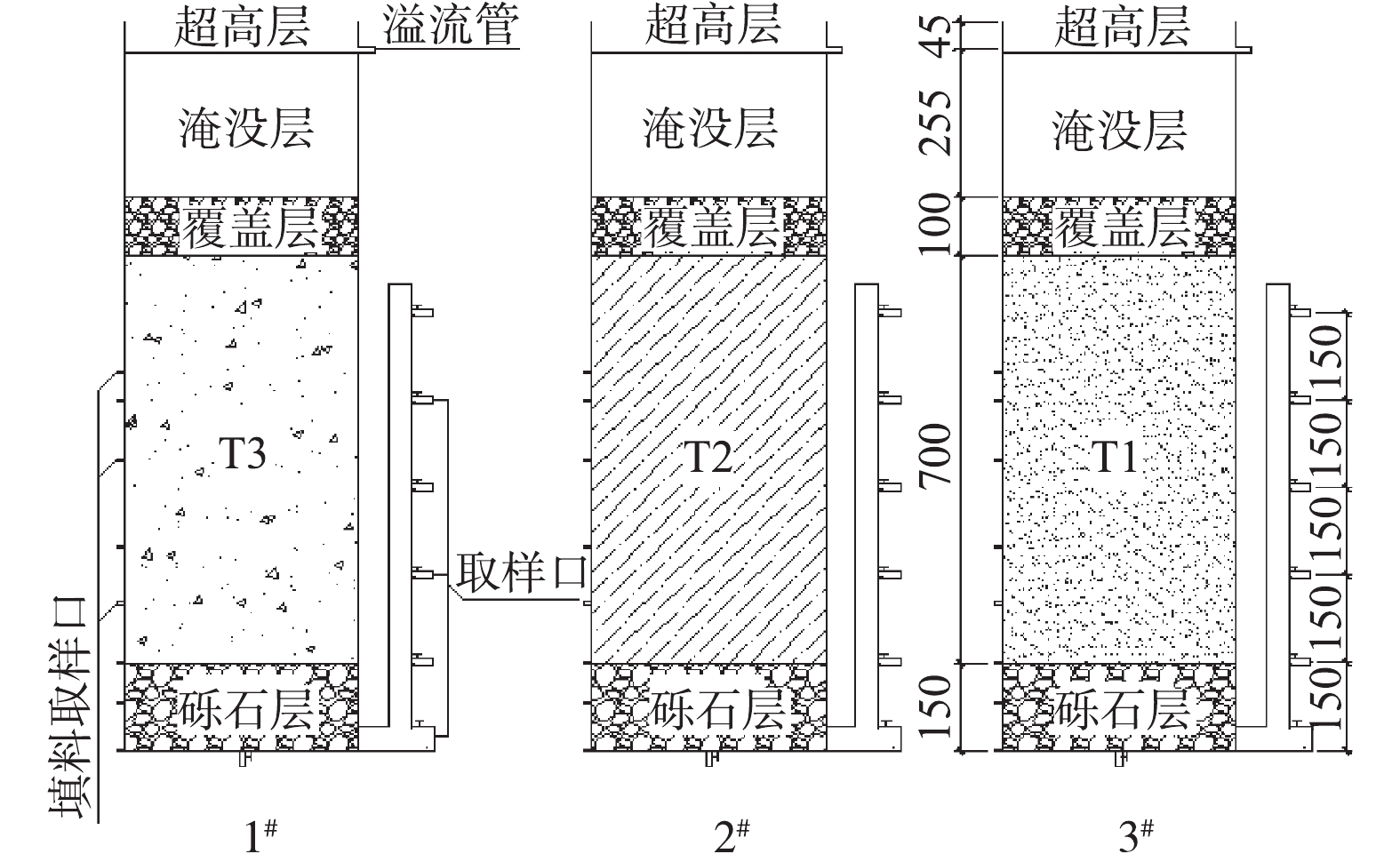


















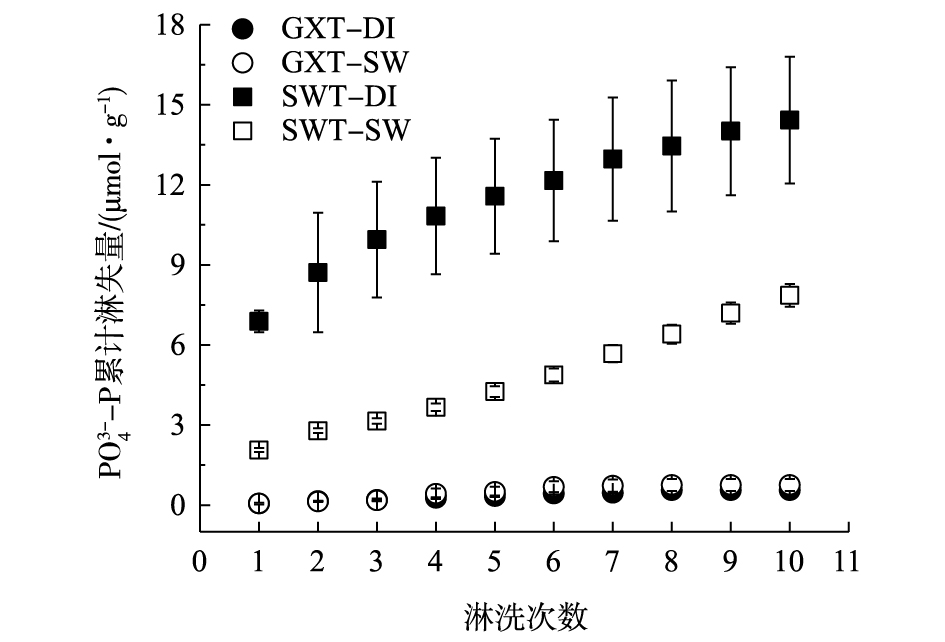






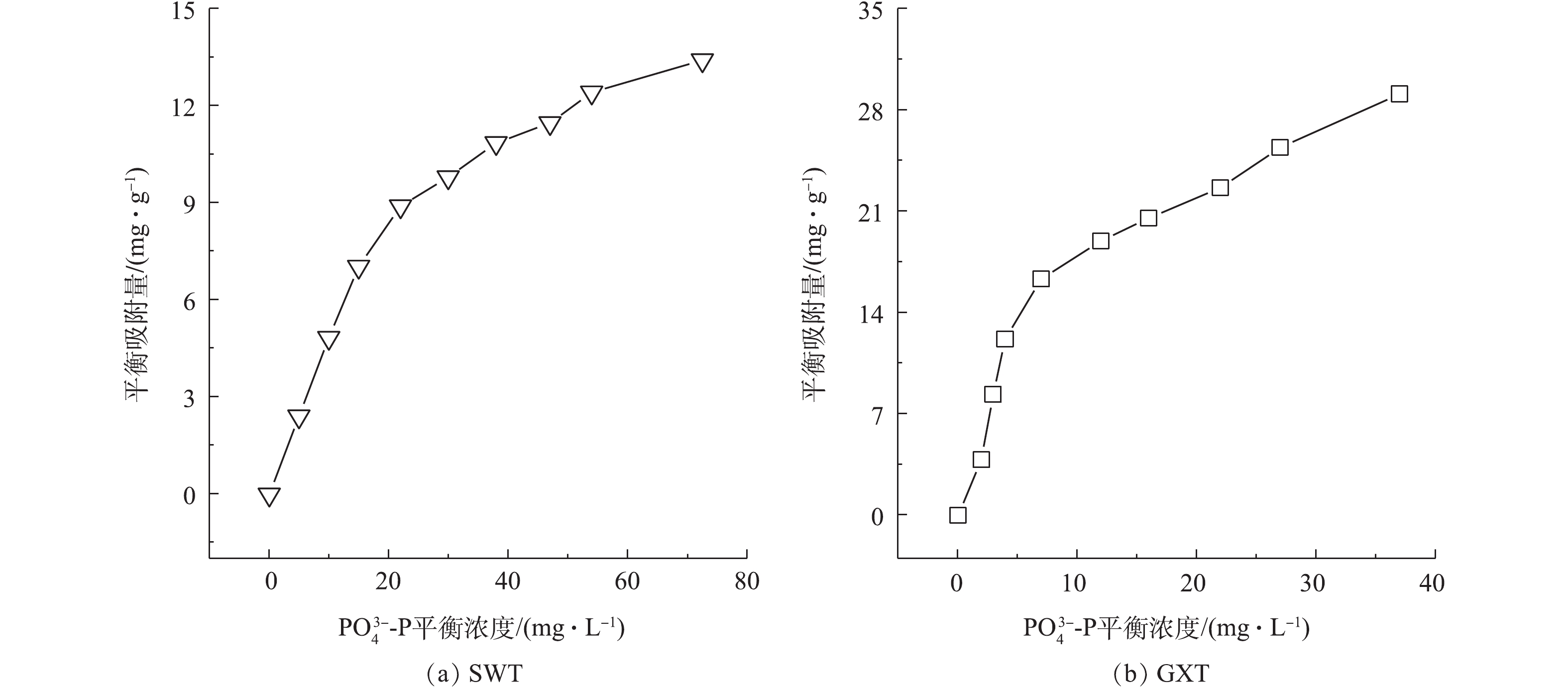








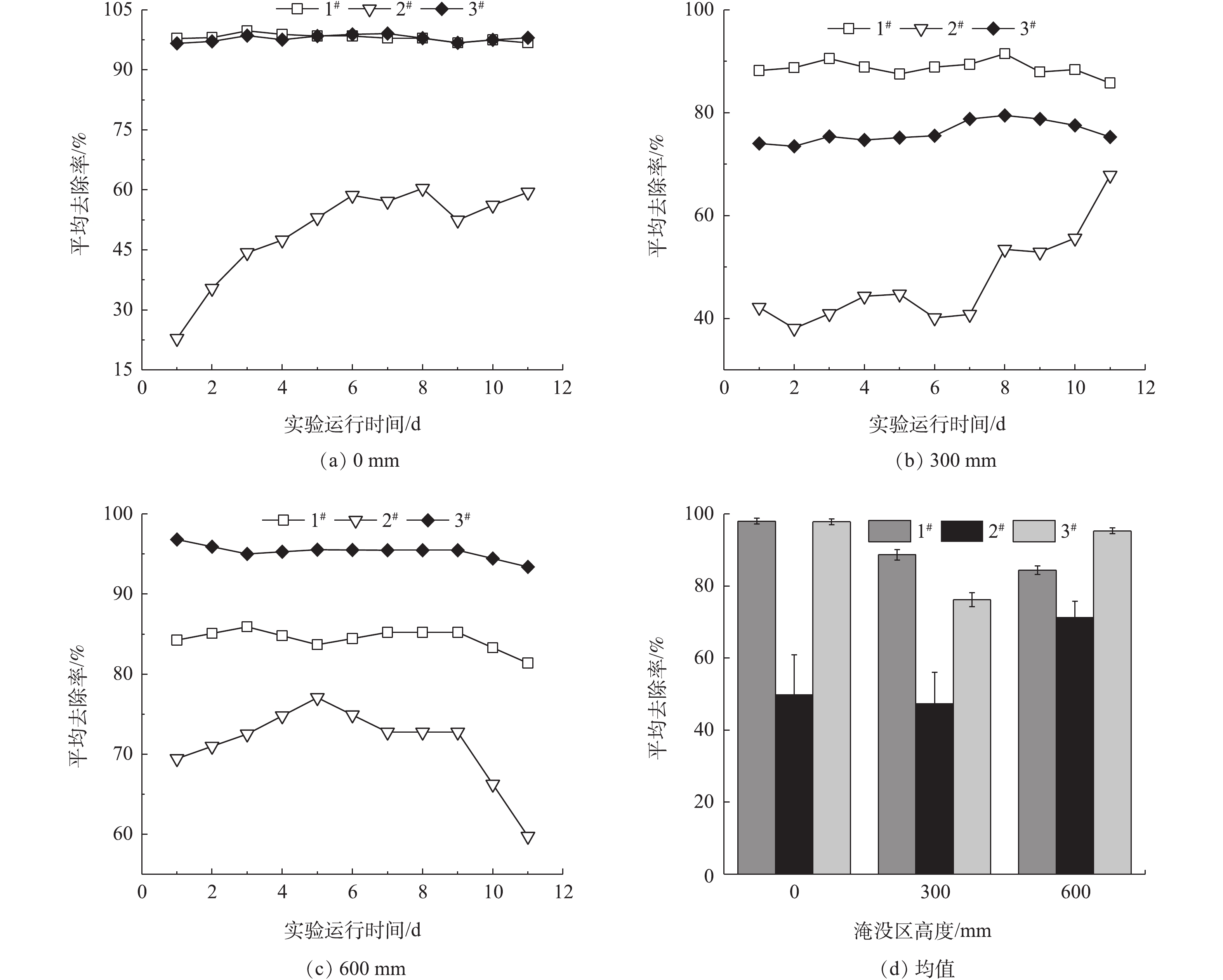























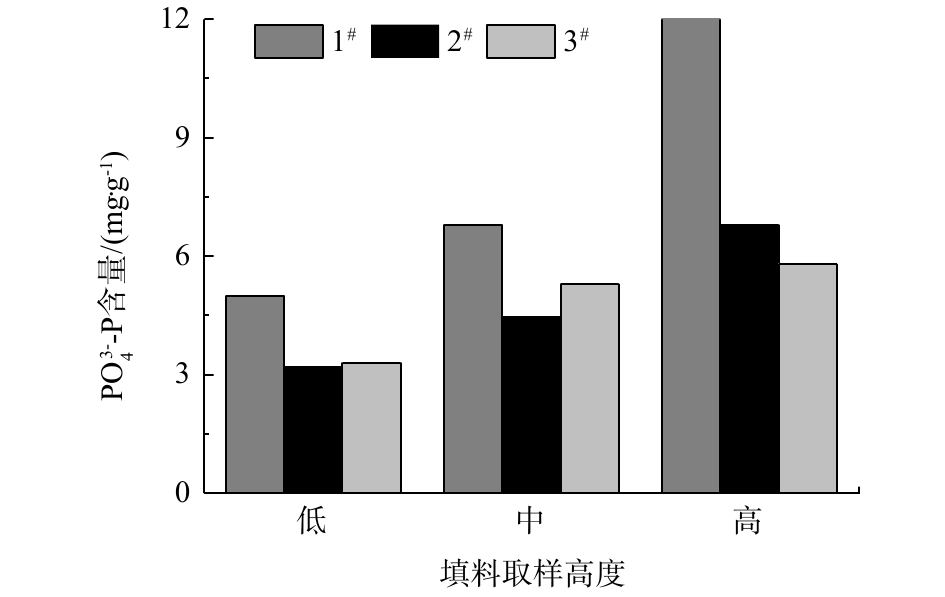











 百度学术
百度学术










